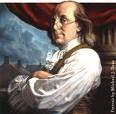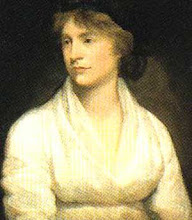Gothic novels during the nineteenth-century reflected the mainstream ideas of Britain about its others through horror, monsters, romance, darkness and death. Written during the period of the Industrial Revolution, the novel raised many issues that could be linked to the fears of English society.Many nineteenth-century English novelists investigated the historical, social, moral, and political aspects of Great Britain. Britain was conquering many lands in the non-Caucasian regions of Asia and Africa. Britain was benefiting from a slave-driven economy in the West Indies.
In the social perspective of the novel being written, the English “Enlightenment” had a skewed view of people in foreign lands. It was part fantasy and part-exoticism. During this time-frame a system of races had been formed. Based only on ethnicity, men were ranked by their race. Europeans commonly referred to the dark Other. Mary Shelley was born and reared in this historically, socially, morally and politically-charged environment and she was affected.
Mary Shelley’s novel Frankenstein was of particular interest because of the negative views of the Other was profound within the text and helped shape the negative reflections of Britain on its Others.
In H.L. Malchow’s “Frankenstein’s Monster and Images of race in Nineteenth-Century Britain,” he claimed gothic novels of this period allowed humanity to claim the responsibility for remaking and re-shaping creation itself through forced measures.
Malchow focused on the racial interpretation of the novel through the historical, social, moral and political context of the times.
He highlighted Frankenstein’s correlation with the historical aspects of Britain’s emerging industrialized society; the social aspects on views on non-whites, specifically blacks; the moral aspects on abolishing slavery in the West Indies; and the political aspects of the merchant class securing status and wealth (93-100).
Within the novel, the Other was dehumanized, which allowed for common acceptance of the Creature’s ill treatment and isolation. The creature was described as being about eight feet in height, with translucent yellowish skin that "barely disguised the workings of the vessels and muscles underneath", watery, glowing eyes, flowing black hair, black lips, and white teeth (37).
In the same way Malchow investigated images. The image portrayed in a “Scene from the Extravaganza of Frankenstein: or ‘The Model Man,’ at the Adelphi Theatre,” Illustrated in the London News on 12 January 1850, on page 28, was a reflection of the times. He highlighted images that intentionally paralleled the social stereotypes on non-whites as the “monster,” the Other (120).
He highlighted the subconscious messages with the novel beginning with the concepts that were politically inspired by Rousseau, but matured with mid-Victorian pseudo-scientific racism. Europeans were mal-informed on the Other.
The images of the Other within novel are compelling and exemplify Malchow’s argument. Shelley wrote, “His yellow skin scarcely covered the work of muscles and arteries beneath; his hair was of a lustrous black, and flowing…his shriveled complexion, and straight black lips” (37). The yellowness of the creature’s skin instantly signified his Otherness.
The blackness of the creature’s hair and lips exemplified the darkness of the Other. Shelley’s description of the Other was ill-informed and reflective throughout her novel Frankenstein.
Mary Shelley was limited in her representation of the Other. The Other represented anyone outside the English standard of civilization. Though accomplishments in this novel are undeniable, Shelley’s lack of knowledge and respect for the uniqueness and the popularity of the novel greatly affected concepts of the Other within Frankenstein.
One can easily argue that in the nineteenth-century that increased exposure to the Other provoked fear and uneasiness. Whether conscious or unconscious, the fear and sense of uncertainty was revealed within the lines of Frankenstein.
Additionally, Patrick Brantlinger stated that “[Malchow] focus[ed] on the numerous intersections between the literary conventions of the Gothic romance tradition…about race and empire… [and showed] the debates of slavery, abolition, and miscegenation” (698).
Malchow was able to contextualize Frankenstein as it related to slavery and abolition. He highlighted Britain’s issues of race and empire and its reflection in English Gothic literatures such as Mary Shelley’s Frankenstein.
Though limited in actual experience and encounters with the Other, Shelley’s creature was a reflection of mainstream ideas and thoughts on the Other.
Furthermore, Alicia Thompson’s dissertation “The Frankenstein paradigm: Marginalized literatures as monster and the voice of protest” could be adjusted to analyze the interrelationships in Frankenstein between a dominate Anglo-Saxon culture and a subordinate “Other” that exists within the periphery of society.
The Frankenstein paradigm existed and operated between a white patriarchal domination English society and the marginally oppressed Other. Shelley used of “monster” as “Other” in Frankenstein. Thompson stated, “The issues of identity, flight and monster imagery exposed the foundations of patriarchal acts that dehumanize, oppress and maintain the idea of white supremacy” (24).
Thompson’s assertion can be proven within the confines of the novel. One can deduce that part of Frankenstein's rejection of his creation was the fact that he did not give it a name---giving the creature a lack of identity.The same practice was common in slavery. The taking away of one’s name was instrumental in submission of the slave. With the novel, the creature was referred to by words such as "monster", "creature", "demon", "fiend”,” demonic corpse" and "wretch".
When Victor Frankenstein conversed with the monster in Chapter 10, he addressed the creature as "Devil" and "Vile.” Some have referred to the Creature as "Frankenstein" by pointing out that the creature was Victor Frankenstein's offspring, his creation. Again the practice of slavery was applicable—the idea of forcing the slave-masters name onto the slave.
The practice allowed for complete ownership of another individual. One could also argue that the monster was the invention of Doctor Frankenstein and inventions are often named after the person who invented them. (However one chooses to view)Which ever view one takes, the idea of complete possession another individual was clear.
Furthermore Thompson stated, “The Frankenstein paradigm provides a different theoretical lens that allows examination and reflection regarding the nature of interrelationships involved in patriarchal hierarchies that sanction institutionalized racism” (220). Racism was, in essence, fear.
During much of the novel Victor feared the creature's desire to destroy him by killing everyone and everything most dear to him. Within the text, the creature had killed his youngest brother, William, his friend Henry Clerval, and his bride Elizabeth. It must be noted however that the creature was not born evil. It sought only to be loved by its creator, by other humans, and to love a creature like himself. It was mankind who taught the creature to hate and reject.
Victor and the villagers taught the creature rejection and how to be evil. The creature did not feel fear until he realized the reactions of his environment—only then did he understand that he was a monster.Thompson stated, “The subjugated, oppressed other, born into a patriarchal order gazes expecting protection, guidance and love, but reaps cruelty, hatred and rejection” (48). Frankenstein was a product of the mainstream subjugation and oppression of the Other within nineteenth-century English society—the creature was its manifestation.
To reiterate, Mary Shelley’s Frankenstein was a reflection of Britain and its concepts about its Others. Many gothic novels during this era reflected the mainstream ideas of Britain about its others through horror, monsters, romance, darkness and death--Frankenstein was no exception.Frankenstein highlighted the historical, social, moral, and political aspects of Great Britain.
Works Cited
Brantlinger, Patrick. “Gothic Images of Race in Nineteenth-Century Britain by H. L. Malchow.” Albion: A Quarterly Journal Concerned with British Studies. 29.4 (1997): 698-699.
JSTOR. 15 March 2008 http://links.jstor.org/search.
Burke, Edmund. “The Sublime and the Beautiful.” The Longman Cultural Edition: Frankenstein. Susan Wolfson. New York: Pearson Longman, 2007. 212-214.
Malchow, H.L. “Frankenstein’s Monster and Images of Race in Nineteenth-Century Britain.” Past and Present. 139 (1993): 90-130. JSTOR. 10 February 2008 http://links.jstor.org/search.
Shelley, Mary Wollstonecraft. “Frankenstein.” The Longman Cultural Edition: Frankenstein. Susan Wolfson. New York: Pearson Longman, 2007. 1-179.
Thompson, Alicia Rebecca. The Frankenstein paradigm: Marginalized literatures as monster and the voice of protest. Diss. Indiana University of Pennsylvania, 1999. AAT 9948379.
Subscribe to:
Post Comments (Atom)









No comments:
Post a Comment